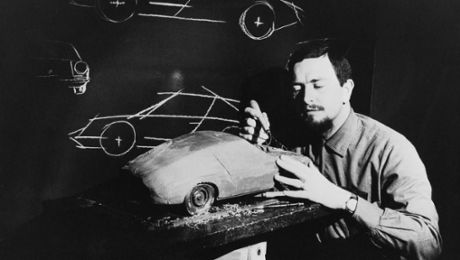In redesigning the body, Porsche designers had no desire to compromise. The aim for the 964 was not to deviate too much from the G-Series in terms of appearance, but to look more modern and to deliver greater efficiency. In unmistakably 911 fashion, the headlights were positioned almost vertically in the tunnels of the wings. Meanwhile, the number plate, air intakes, indicators and fog lights were integrated into the front bumper for the first time. Porsche significantly improved the cd value, making the 964 the most aerodynamic air-cooled 911 to date. The lower drag was thanks to the aerodynamically shaped front and rear ends, as well as the sill covers and rain gutters. The completely smooth underbody and the electric rear spoiler that extended at speeds above 80 km/h also had a major impact.
Model variants
To help customers distinguish between the models, Porsche called its rear-wheel drive variants of the 964 Carrera 2 and its all-wheel-drive variants Carrera 4 . Both Carrera models were available in Coupé, Targa and Cabriolet bodystyles. Porsche initially offered the Turbo as a Coupé only, with a Cabriolet version joining the range from 1992.

